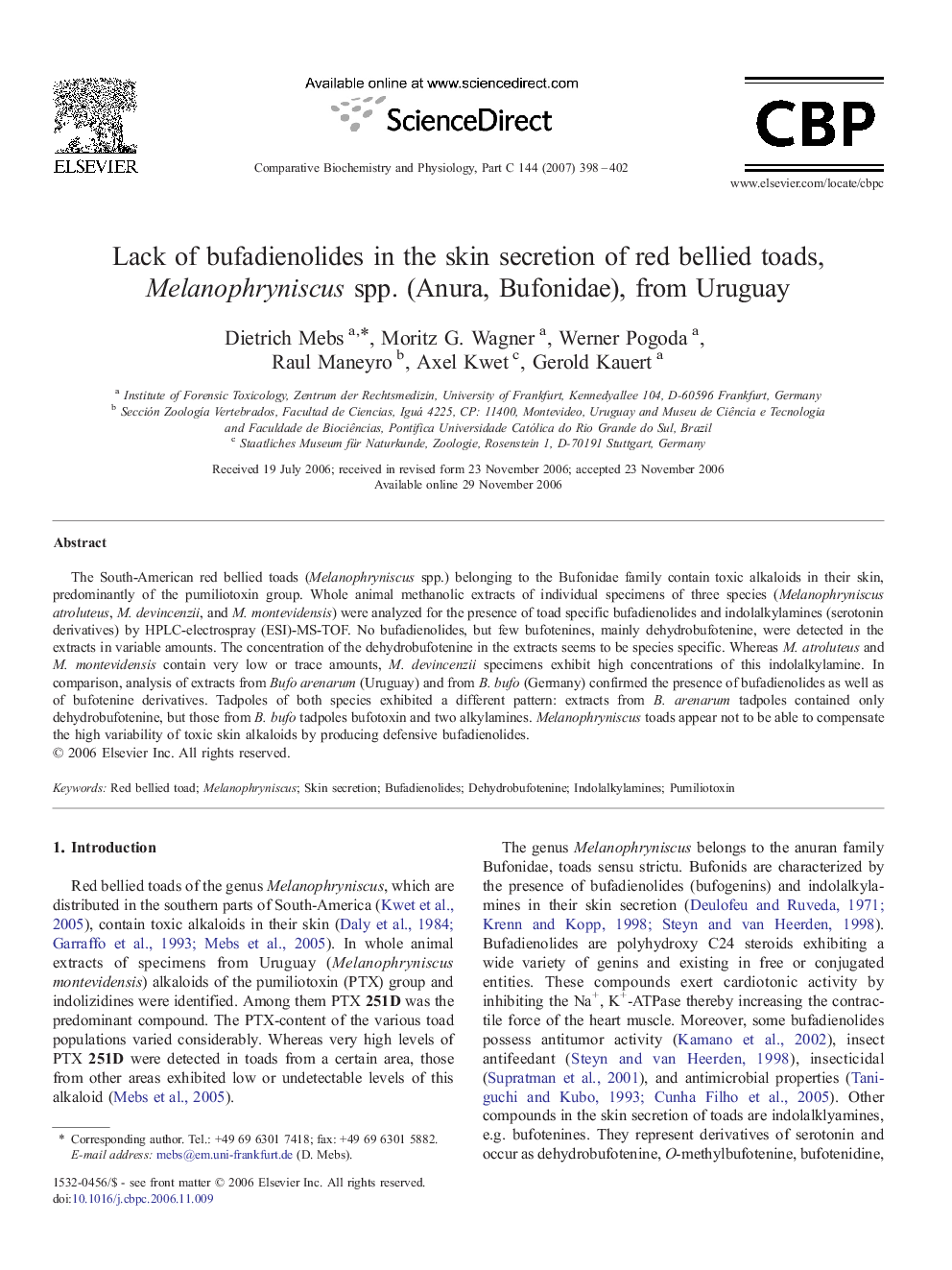| Article ID | Journal | Published Year | Pages | File Type |
|---|---|---|---|---|
| 1978106 | Comparative Biochemistry and Physiology Part C: Toxicology & Pharmacology | 2007 | 5 Pages |
The South-American red bellied toads (Melanophryniscus spp.) belonging to the Bufonidae family contain toxic alkaloids in their skin, predominantly of the pumiliotoxin group. Whole animal methanolic extracts of individual specimens of three species (Melanophryniscus atroluteus, M. devincenzii, and M. montevidensis) were analyzed for the presence of toad specific bufadienolides and indolalkylamines (serotonin derivatives) by HPLC-electrospray (ESI)-MS-TOF. No bufadienolides, but few bufotenines, mainly dehydrobufotenine, were detected in the extracts in variable amounts. The concentration of the dehydrobufotenine in the extracts seems to be species specific. Whereas M. atroluteus and M. montevidensis contain very low or trace amounts, M. devincenzii specimens exhibit high concentrations of this indolalkylamine. In comparison, analysis of extracts from Bufo arenarum (Uruguay) and from B. bufo (Germany) confirmed the presence of bufadienolides as well as of bufotenine derivatives. Tadpoles of both species exhibited a different pattern: extracts from B. arenarum tadpoles contained only dehydrobufotenine, but those from B. bufo tadpoles bufotoxin and two alkylamines. Melanophryniscus toads appear not to be able to compensate the high variability of toxic skin alkaloids by producing defensive bufadienolides.
